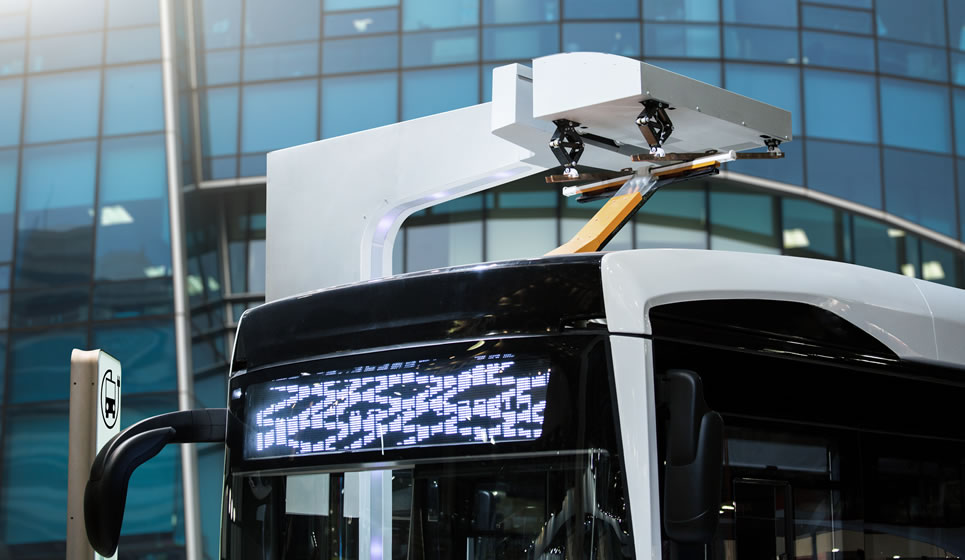Transportation contributes to approximately one-quarter of global greenhouse gas emissions.1 It is Australia’s third-largest source of greenhouse gas emissions (102 million tonnes in 2018–20192), with the highest rate of growth.3 Therefore, transitioning the transportation sector to zero emissions is critical in the fight to address climate change and to support Australia's road to net-zero emissions.
Video: Bus EV Infrastructure: Enabling the Transition to Electric Bus Fleets
Australian Governments and the transport industry have set plans in place to reduce transport emissions by moving to zero emission buses. The Minister of Transport and Roads in NSW, Andrew Constance, plans to convert NSW’s entire bus fleet to electric by 2030.4 The Labor Government in Victoria has pledged for all new public transport buses to be zero emissions from 20255 and made a $20 million investment to a Zero Emission Public Transport Bus Trial.6
Currently, technology choice of Battery Electric versus Hydrogen Fuel Cell is a major consideration and with technology rapidly advancing, the ideal technology choice becomes more challenging. Though Battery Electric is the current technology of choice due to cost and scale, Hydrogen Fuel Cell technology is expected to be on parity within the next 5 years. It’s expected that a mix of technologies will be applied to suit various operating environment scenarios.
Initial cost is a common challenge to the electrification of public transport globally. Electric buses ($700,000–800,000 AUD) are still significantly more expensive to buy than diesel ($500,000–800,000 AUD).7 Charging infrastructure and battery prices do pose significant costs up-front. However, their prices have reduced over time as technology evolves and total cost of ownership is approaching cost parity.
Another challenge is the infrastructure needed, particularly robust electrical infrastructure necessary to charge large fleets of buses at the depots and the associated space required.

These are some of the reasons why transitioning bus fleets to zero emissions are challenging but the benefits to the bottom-line and society are worth the effort. Hitachi brings an unparalleled level of industry leadership, in-depth knowledge, and proven experience in the Electric Vehicle (EV) industry and through its full end-to-end Intelligent Fleet Decarbonisation solution, supports customers make a smooth transition to electric bus fleets.
The Intelligent Fleet Decarbonisation (IFD) solution is a holistic solution for customers who wish to electrify bus fleets. Hitachi enables fleet owners to simplify and accelerate the transition to net-zero through a tailored, flexible and adaptable approach.
The solution is designed to de-risk the entire fleet electrification process by working with customers to create a total cost of ownership model that’s flexible for their business. This means Hitachi can design, deliver and finance an operator’s transition to zero emission bus fleets with vehicles, batteries, charging infrastructure, power security solutions and full digital integration through fleet, charging and power management and optimisation solutions. In return, the customer pays a set of prices per month, vehicle, or mile over the life of the contract to cover the entire service. This helps customers avoid up-front expenditure.

Hitachi’s solution also encompasses a digital platform (Lumada) that maximises effective management of each depot’s mobile and fixed assets. Hitachi’s suite of data-driven turn-key solutions can be selected and tailored to the specific needs of any fleet. Hitachi aims to continually optimise running costs and leverage assets such as solar and battery energy storage to generate benefits that reduce the total cost of ownership.
“Within Hitachi Group and through our partnerships, we have the complete bus electrification solution suite that enables our customers to accelerate their fleet electrification and decarbonisation transition.”
– Brett Dolan, General Manager at Hitachi Australia
Around the world, electrification is underway, and Hitachi’s partnerships continue to strengthen the Intelligent Fleet Decarbonisation (IFD) solution offering. Hitachi has partnered with Arrival Buses in the UK and Shenzhen Bus Group in China, whose adoption of electric buses has resulted in 48% CO2 reduction.8
Hitachi’s IFD approach provides considerable opportunities to create new value for industry and government. Opportunities to create new revenue streams such as through second and third party charging at the bus depot or opportunities to integrate the depot into a commercial/residential development.

This is a pivotal time to prioritise a net-zero society in Australia. Hitachi will continue to champion decarbonisation of mobility and create a more sustainable future by enabling the transition to electric bus fleets.
We are committed to taking climate action and playing our role in a net-zero society. Our ambition is to contribute to a more sustainable future through green technology and digital solutions. As a Principal Partner of the COP26 UN Climate Change Conference, we support companies and people at the frontline of climate change to inspire climate action. As a company, we aim to become carbon neutral across offices and factories by 2030 and across our entire value chain by 2050.
Reference
1 Iea.org, Tracking Transport 2020
2 Australian Government, Department of Industry, Science, Energy and Resources, National Greenhouse Gas Inventory: September 2019
3 Climate Council, Transport Emissions: Driving down car pollution in cities, 2017
4 Smh.com.au, Sydney aims to turn entire bus fleet electric by 2030
5 Premier.vic.gov.au, New Bus Franchise To Jump Start Zero Emissions Pledge
6 Energy.vic.gov.au, Zero emissions vehicles
7 Renew Economy, Victoria needs to get on electric bus if it’s serious about emissions and health
8 Automotiveworld.com, Hitachi Europe partners with Shenzhen Bus Group to decarbonise European bus industry